As a gestalt therapy practitioner, my own experiences with anxiety and learning to overcome it therapeutically and personally play a role in my practice. Anxiety can be debilitating enough to make us forget ourselves, including all our skills, capacities, and joys; it can slowly strip away self-confidence and clarity, and leave a shell of doubt and fear.
In this post, I will give an overview of anxiety and gestalt therapy, and explain some of the ways that gestalt therapy in practice help overcome anxiety.
What is anxiety?
Anxiety is a heightened state of psychological and physiological response to stressors in the environment.
It includes any set of circumstances that go beyond the individual’s coping reserve. If we could cope well using the range of coping repertoire we possess, then we may not enter into a state of anxiety; some anxiety is brought on by overthinking, or magnification, while other versions of it are automatic reactions to the trigger situation.
Symptoms of anxiety can involve the physiological, like shortness of breath, increased heart rate, sweating, clammy hands, sinking feeling, dip in the pit of the stomach or nervous tremors.
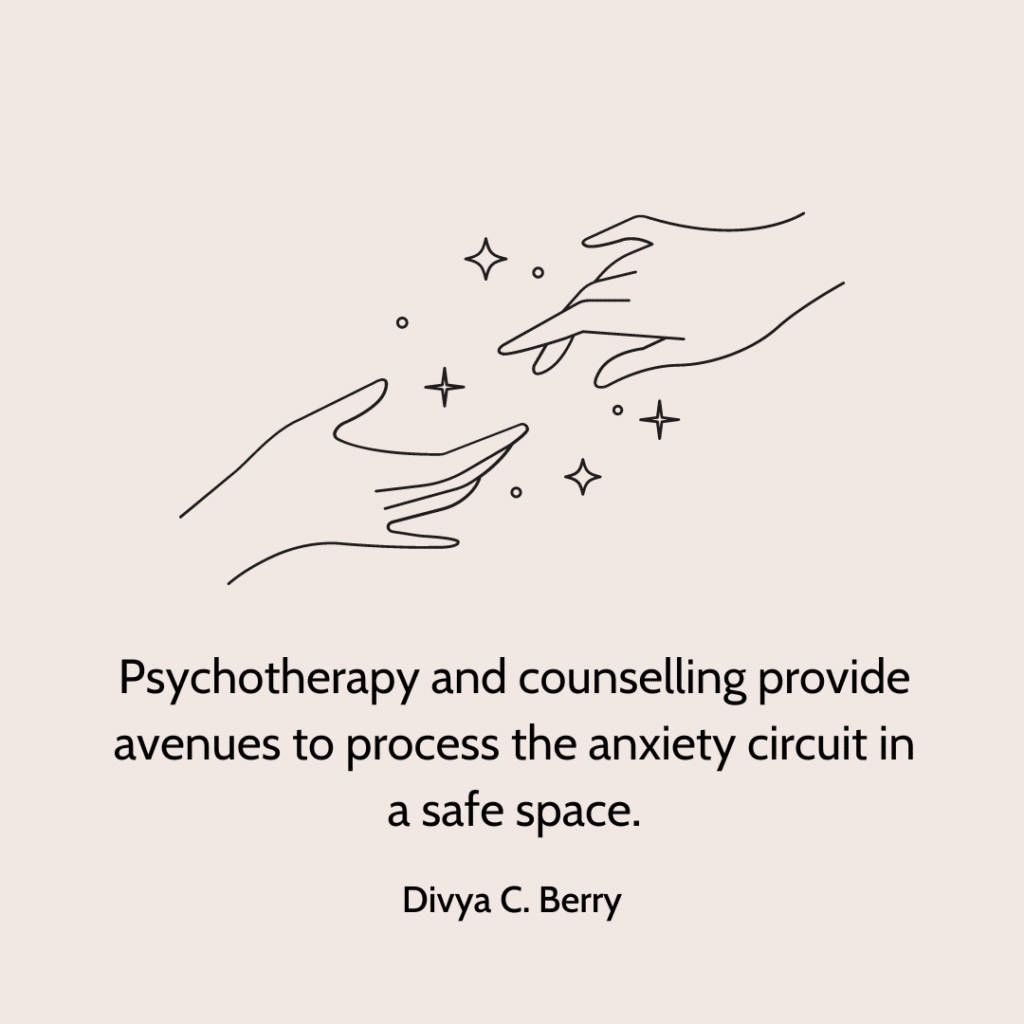
It can also be the psychological or emotional, such as irritability, fear, negative thoughts, self doubt, worry, self defeating ideas, cognitive dissonance and poor decision making.
Anxiety needs to be met with a response from the individual. Long-standing anxiety is often the result of the person surrendering to the vagaries of anxiety, and succumbing to its onslaught without a coping plan, often made worse by the numbing or detachment that can occur with chronic anxiety.
Developing the capacity to respond to anxiety, whether it is arising from within us, or from our response to what lies outside of us, is the key to finally releasing ourselves from this cycle. Psychotherapy and counselling provide avenues to process this anxiety circuit in a safe space.
Gestalt therapy and its applications
Gestalt is a fundamentally humanistic therapy with a focus on the individual’s whole, and it differentiates itself from other therapies in its impetus to not get ‘stuck’ on issues. This applies to stories, narratives, relationships, past experiences, but also to the body and the whole being of the living organism.
Feelings are seen as perhaps getting stuck, and emotions are felt in the body. Indeed,the most important aspect of gestalt therapy is the physical form of the individual, from how they present themselves, to breathing patterns and sitting positions, ticks and twitches, and embodying a range of internally felt mechanisms into the physical.
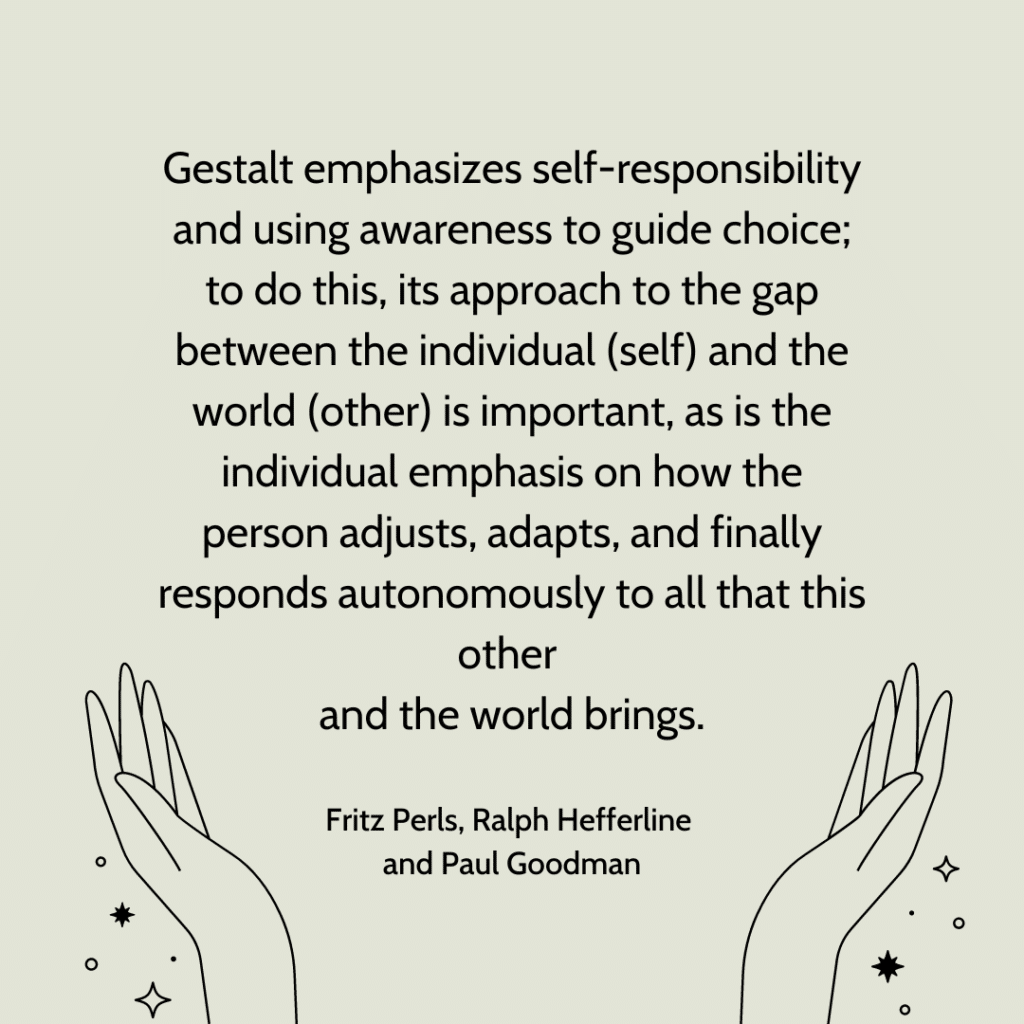
Gestalt emphasizes self-responsibility and using awareness to guide choice; to do this, its approach to the gap between the individual (self) and the world (other) is important, as is the individual emphasis on how the person adjusts, adapts, and finally responds autonomously to all that this other and the world brings (Perls, F., Hefferline, P., Goodman,R., 1951).
In Gestalt, anxiety is defined as ‘excitement without breath’. Let us take a more broad based view to understanding ‘excitement’ here, as it carries only positive connotations in popular understanding.
Excitement is anything that ‘excites’ the organism both mentally and physically. Fritz Perls, the founder of the Gestalt School, describes anxiety as “the pervasive factor in neurosis” and “the experience of breathing difficulty during any blocked excitement” (Perls et al, 1951,128). Healthy functioning individuals are able to respond by regulating their breath in the present moment and managing this excitement to the system, and prevent it from lapsing into anxiety.
Individuals with more neurotic tendencies will attempt to ‘control’ this excitement and they do so by their inability to control their breathing. Neurotic tendencies here are not referring to psychosis or a break from reality, but as a mild mental condition that has enough stressors to then express as anxiety and depression, and even other extensions of anxiety disorders like obsessive compulsiveness, hypochondria, paranoia, panic attacks, generalized anxiety disorder etc.
Experimentation, questions, imagination, and bringing the client back to the moment are all psychotherapeutic methods used exclusively in Gestalt for creating an action based modality and go beyond dialogue. Polster, I. & Polster, E. (1974) refer to this curative process of Gestalt Therapy as action.
Discover whether therapy is right for you
6 Gestalt Therapy Techniques for Anxiety
Gestalt Therapy focuses on the whole and entire field of experiences of the individual, and their collective backdrop. It deals with experiences that are in their conscious frame of reference, and others that are perhaps disembodied but very much still impacting them subliminally or held in their body as tension.
The therapeutic inquiry, method, and journey is one of processing, where through this the individual finds relief by heightening their own awareness and then improving choice and exercising conscious decision making about the situations in their life that they can alter and improve – in this case, to manage anxiety.
Attention is equally given to understanding the anxiety, beyond management; how it arrived, what was the adjustment made in the person’s life to cause it to need to be adapted to, what has been taken away or given, where does it feel difficult, and how it is felt in the body.
Here are some of the specific techniques in which this processing of anxiety will take place over the course of Gestalt Therapy sessions:
1. Being in the ‘Here and Now’
Walking back from being stuck in past experiences, and tuning into how we feel in the present moment, takes skill and practice.
Often we are lost in our own narrative, and then it belongs to the therapy process to help us come back to the ‘here and now’ and then talk about how we feel. Feelings may not change but the body’s response will guide, as will the narrative of blame and shame. Being present, focused and fully in the moment is challenging, and a technique to be learnt and built into one’s coping repertoire.
2. Noticing the body’s response
When anxiety first arrives, where do you feel it in the body? Where does the anxiety begin? Do you feel a tug in your throat, a tightness in your chest, a pit in your stomach, or does it show up as weakness in your limbs?
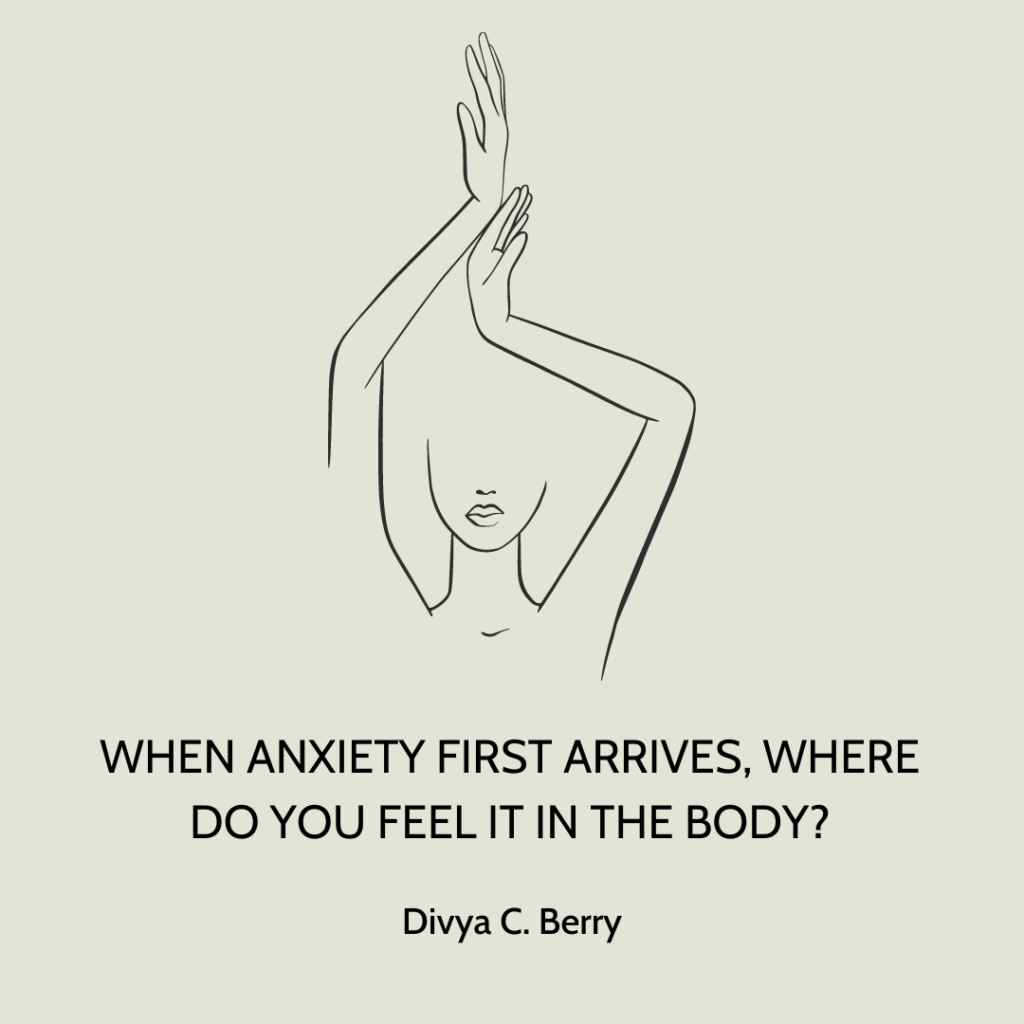
These are some of the questions that may be important to ask and answer as we start the process of locating where feelings arrive and are felt in the body, in the present moment, and when. We notice we are stressed, anxious or upset by what we feel or by physical mechanism like tears, headaches and frowns, but we are less attuned to noticing where this tension is felt in our body and how we carry it forward.
More reading: How to manage stress
3. Using the breath
The breath is the most powerful tool to regulate our feelings, to notice we are feeling differently or charged, and indeed to calm ourselves down to a neutral state where we can talk about our feelings in the here and now.
Breathing techniques, grounding exercises and noticing variability in the breath are all part of the intervention and methodology of identifying this simple mechanism and the deeper role it plays; we also must allude to the Persian concept and definition of anxiety as breathlessness.
4. Breaking the circuit
Patterns of events or relationship struggles are taking place around us in our lives at any point of time, some more than others.
We cannot assert authority over these, but we can exercise the autonomy of choice to exit at times, and hence ‘break free’ from the circuit. The first step of processing is to identify patterns, observe how we find ourselves enmeshed, and then slowly own the part we play in continuing the circuit, and find a safe space for ourselves to ‘exit’.
5. Building awareness
Awareness is like an illuminator; once it arrives, it is difficult to turn away from, and if it takes time to arrive, we are changed by the process of its arrival.
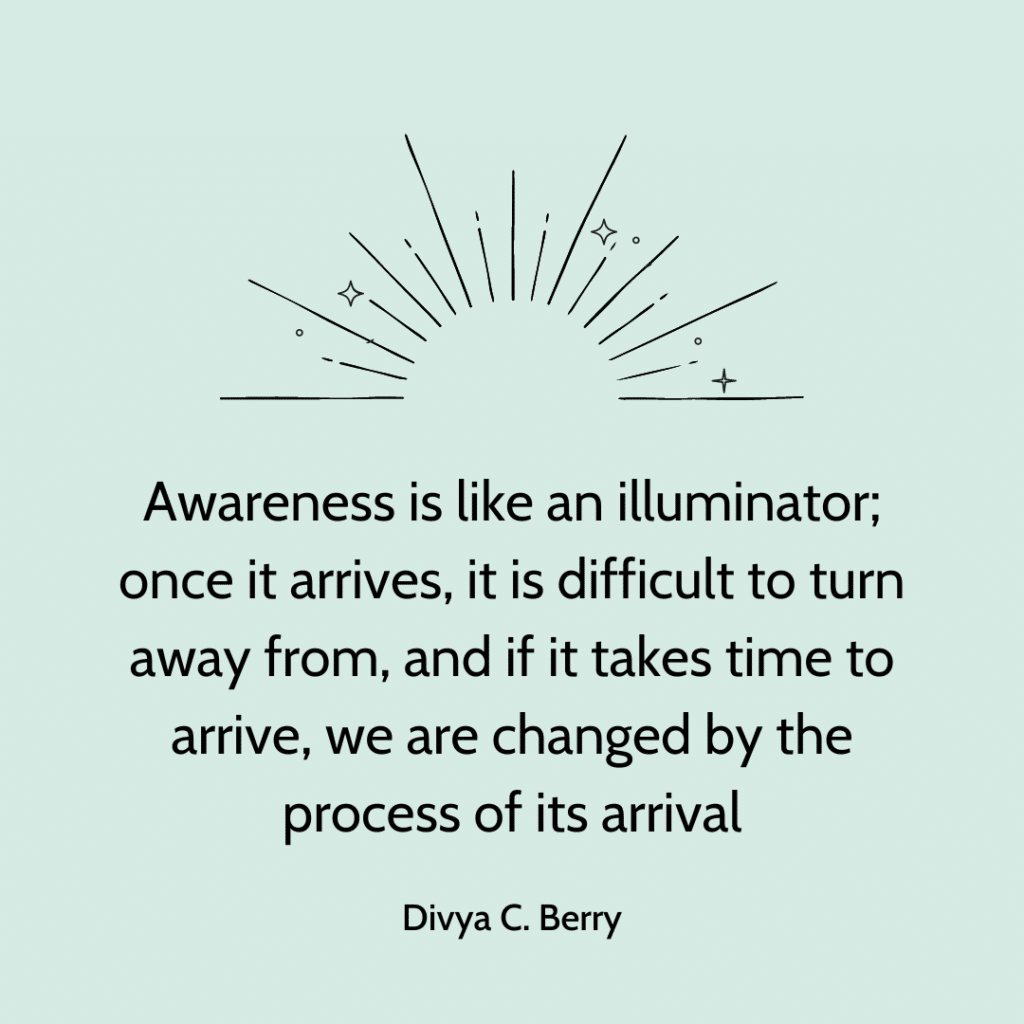
The aware mind is awake, no longer asleep, and ready for action; or rather, compelled to act for its own benefit. The awareness of our issues, real limitations, life circumstances, and all the fixed unchangeable entities helps us to move from immobility towards activity. Hopefully the driving force for this activity is a sense of agency that is created by feeling emboldened by our own choices and experiencing autonomy.
We work with what we can and cannot change, with space for acceptance, and scope for foraging ahead to make new choices; hence the relationship with the environment moves from social support to self support.
6. Coping repertoire
Building your own ‘toolbox’ of coping responses that are bettered through awareness is an important technique and milestone in the gestalt therapy process of overcoming anxiety.
Over time, techniques and skills bring about the positive changes we need, irrespective of the situations that are outside our control. These techniques in themselves brings about agency, and in a world where we cannot control much else, we are able to exercise regulation over our own emotions and eventually choose behaviours that work for us.
Once we carry this repertoire within us, we can exercise a range of psychological techniques from caution to restraint to abundance, as needed; this is the development of our own toolbox and learning to work with ‘what is’.
My Gestalt approach to dealing with anxiety
My practice is integrative with a clear Gestalt focus; I use and borrow from all my previous training and experiences, but my lens for delivering therapy is made up of the ideas and methods shared here.
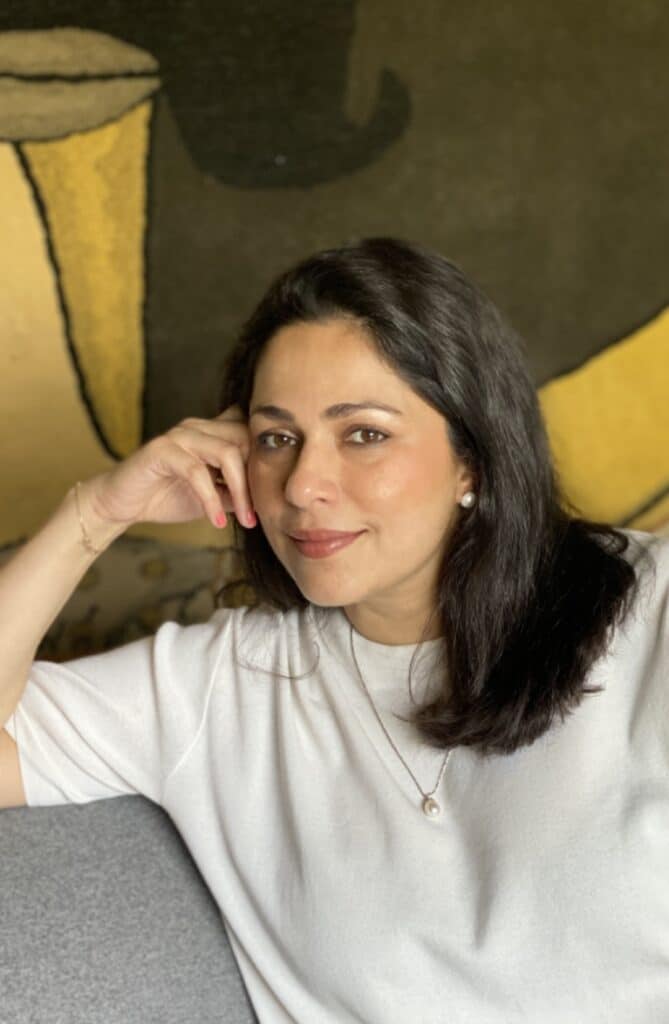
My own experiences with anxiety and learning to overcome it therapeutically and personally will play a role, as will my interest in the area as a practioner. Anxiety can be debilitating enough to make us forget ourselves, including all our skills, capacities, and joys; it can slowly strip away self-confidence and clarity, and leave a shell of doubt and fear.
My approach is first of all compassionate, allowing space to receive the difficulty involved in owning one’s anxiety.
Some clients will bring clear anxiety symptoms and that is what they are there for, while others come with latent anxiety that is discovered in the process. It becomes my responsibility to safely hold the shame and struggle involved in this discovery.
Providing an environment of safety and security, along with a curiousity that is necessary for discovery, form the bedrock of my practice.
I work actively with clients to develop what is known as the ‘muscle’ to be able to cope regularly and consistently with anxiety provoking situations, or then work deeply towards rewiring innate anxious responses. Both situations require awareness building, conscious awakening, and working through innate patterns.
The work also includes building up the inner child self, which may not think of itself as capable of managing anxiety, when faced with constant failures of coping. The ‘coping toolbox’, as I like to call it, is personal and consists of rich imagery, metaphors, and examples close to everyday life to make it more palatable and realistic.
Every session invariably has attention to detail in terms of the body, and where emotions are experienced, and helping the client to develop an awareness of breath as well as body to learn to locate pre-anxiety symptoms ‘before’ they arrive, which means moving from hypervigilance to a state of noticing calmly before things activate into a ready pattern.
Read more: 6 Benefits of Staying Calm In the Face of Stress
I believe firmly in the power of awareness and that kindling this awareness in a person allows them to make autonomous choices for themselves, and that is a self-driven and sustainable path out of anxiety towards freedom.
If you’re interested in booking a gestalt therapy session with Divya, please get in touch via the contact form below.

